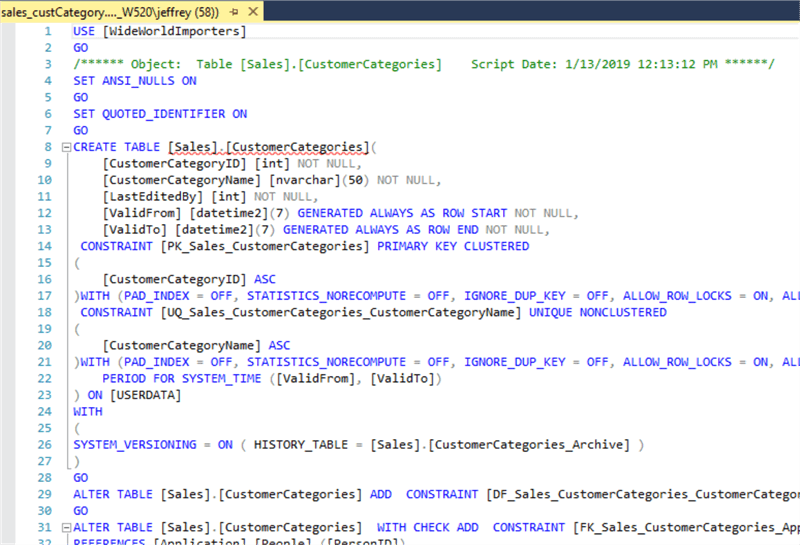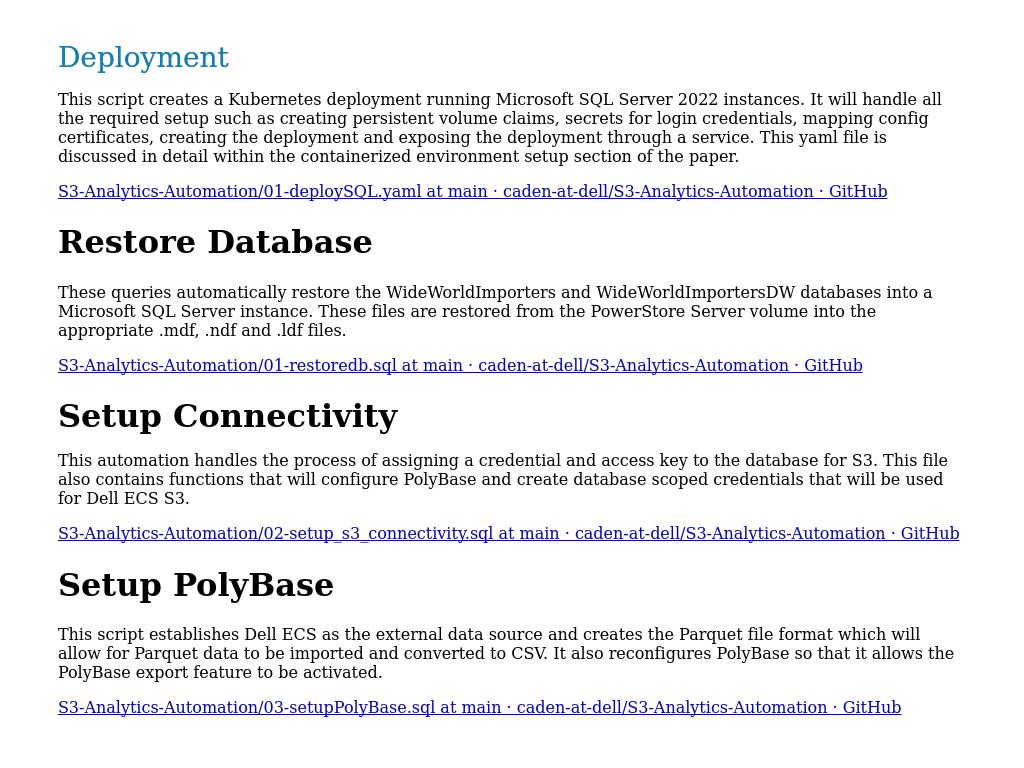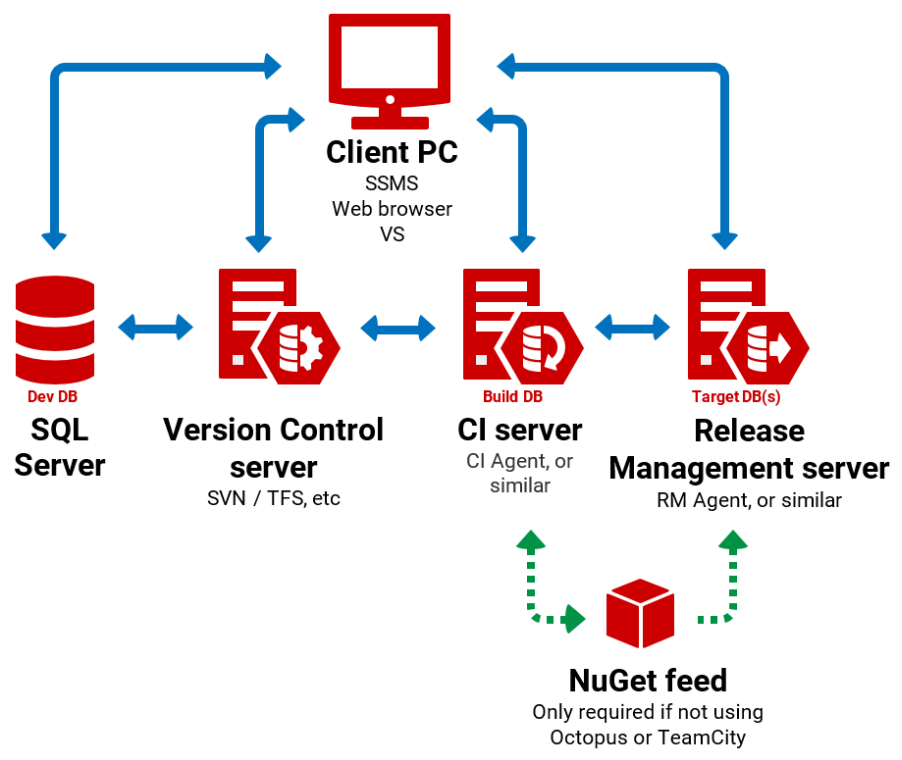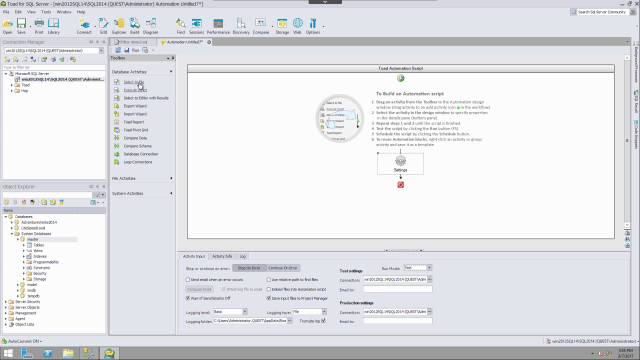Are you tired of manually performing repetitive tasks in SQL Server? Look no further! In this article, you will discover the power of SQL Server Automation Scripts. These scripts are designed to automate various administrative tasks, enhancing your efficiency and saving you valuable time. Whether you need to schedule backups, manage security permissions, or optimize database performance, SQL Server Automation Scripts have got you covered. Say goodbye to mundane manual labor and embrace the simplicity and effectiveness of automation.
What are SQL Server Automation Scripts?
SQL Server automation scripts are a set of commands written in the SQL language that automate various tasks and processes in SQL Server. These scripts are designed to save time and effort by eliminating the need for manual intervention in routine and repetitive tasks.
Definition and Purpose
SQL Server automation scripts are used to automate tasks such as backup and restore, database creation and configuration, index optimization, data archiving and purging, data export and import, performance monitoring and analysis, user provisioning and security management. These scripts automate complex and time-consuming tasks, allowing database administrators to focus on more critical aspects of their job.
Benefits of using Automation Scripts
Using automation scripts in SQL Server offers several benefits. Firstly, it saves time and effort by eliminating the need for manual intervention in routine tasks. This allows database administrators to focus on more important tasks and improves overall efficiency. Secondly, automation scripts ensure consistency in execution, reducing the chances of human error. They provide a standardized approach to task execution, minimizing the risk of mistakes that can lead to data loss or downtime. Lastly, automation scripts improve scalability by allowing tasks to be easily repeated or expanded as needed. This makes it easier to manage large-scale databases and perform repetitive tasks across multiple servers.
Commonly Used SQL Server Automation Scripts
Backup and Restore Automation
Backup and restore automation scripts are essential for ensuring data protection and disaster recovery in SQL Server. These scripts automate the process of creating backups and restoring data in case of system failure or data loss. By scheduling regular backups and automating the restore process, database administrators can ensure the availability and integrity of their data.
Database Creation and Configuration
Automated database creation and configuration scripts simplify the process of setting up new databases in SQL Server. These scripts automate the creation of databases, as well as the configuration of schemas, tables, data types, and indexes. They eliminate the need for manual intervention and ensure consistency in database setup, saving time and effort for administrators.
Index Optimization
Index optimization is crucial for maintaining optimal database performance in SQL Server. Automation scripts for index optimization automate the process of rebuilding and reorganizing indexes, as well as analyzing index fragmentation and updating statistics. These scripts help improve query performance and reduce overhead by ensuring that indexes are properly maintained.
Data Archiving and Purging
Data archiving and purging automation scripts help manage data growth and improve database performance. These scripts automate the process of archiving historical data to separate storage or purging data based on predefined criteria. By regularly archiving or purging data, database administrators can free up storage space and improve query performance.
Data Export and Import
Data export and import automation scripts enable the seamless transfer of data between SQL Server databases and external systems. These scripts automate the process of exporting data from SQL Server to external systems, as well as importing data from external systems into SQL Server. This helps facilitate data integration and migration tasks, saving time and effort for administrators.
Performance Monitoring and Analysis
Performance monitoring and analysis automation scripts help database administrators identify and resolve performance issues in SQL Server. These scripts automate the process of monitoring query performance, analyzing deadlock situations, and generating performance reports. By continuously monitoring and analyzing performance, administrators can proactively address performance issues and optimize database performance.
User Provisioning and Security Management
User provisioning and security management automation scripts simplify the process of managing user access and security in SQL Server. These scripts automate the creation and deletion of user accounts, as well as the configuration of role-based access control. They also automate security audits and compliance checks, ensuring that the database remains secure and compliant with regulatory requirements.

Backup and Restore Automation
Automated Full Database Backups
Automated full database backup scripts in SQL Server allow for the automated creation of complete backups of the entire database. These scripts can be scheduled to run at specified intervals, ensuring that the latest copy of the database is always available for restoration in case of data loss or system failure. By automating the backup process, administrators can ensure data integrity and minimize downtime.
Automated Transaction Log Backups
Automated transaction log backup scripts in SQL Server automate the process of backing up transaction logs at specified intervals. Transaction log backups are essential for point-in-time recovery and ensuring database consistency. By automating the transaction log backup process, administrators can ensure that the transaction logs are regularly backed up, reducing the risk of data loss.
Automated Database Restores
Automated database restore scripts in SQL Server simplify the process of restoring databases in case of system failure or data loss. These scripts automate the restoration of full database backups and transaction log backups, ensuring quick and efficient recovery. By automating the restore process, administrators can minimize downtime and quickly restore the database to a consistent state.
Database Creation and Configuration
Automated Database Creation
Automated database creation scripts in SQL Server streamline the process of creating new databases. These scripts automate the creation of database files, set initial file sizes and growth options, and configure default settings. By using automation scripts, administrators can ensure consistent and standardized database creation, saving time and effort.
Schema and Table Creation
Automation scripts for schema and table creation in SQL Server simplify the process of setting up database objects. These scripts automate the creation of schemas and tables, as well as the definition of columns, data types, and constraints. By automating the schema and table creation process, administrators can ensure consistency in database structure and reduce the risk of errors.
Data Type and Index Configuration
Automation scripts for data type and index configuration in SQL Server automate the process of defining data types and creating indexes. These scripts configure default data types for columns, as well as create indexes based on predefined criteria. By using automation scripts, administrators can ensure optimal data storage and retrieval efficiency.
Database Maintenance Tasks
Automation scripts for database maintenance tasks in SQL Server automate routine tasks such as updating statistics and rebuilding indexes. These scripts schedule and execute tasks like index reorganization, statistics updates, and consistency checks. By automating database maintenance tasks, administrators can improve database performance and minimize the risk of data corruption.

Index Optimization
Automated Index Rebuilding and Reorganizing
Automated index rebuilding and reorganizing scripts in SQL Server automate the process of maintaining indexes for optimal performance. These scripts identify fragmented indexes and automate either the rebuilding or reorganizing of indexes to reduce fragmentation and improve query performance. By automating index maintenance, administrators can ensure that indexes are consistently optimized.
Index Fragmentation Analysis
Automation scripts for index fragmentation analysis in SQL Server help administrators identify and address index fragmentation issues. These scripts analyze the fragmentation level of indexes and provide recommendations for index maintenance. By regularly analyzing index fragmentation, administrators can proactively address performance issues and optimize query execution.
Statistics Update Automation
Automation scripts for statistics update in SQL Server automate the process of updating query statistics. These scripts automatically identify outdated or missing statistics and update them to improve query performance. By automating statistics updates, administrators can ensure that SQL Server has accurate and up-to-date information for query optimization.
Data Archiving and Purging
Automated Data Archiving
Automated data archiving scripts in SQL Server streamline the process of archiving historical data. These scripts identify and move data that meets predefined criteria to separate storage, freeing up space in the main database. By automating data archiving, administrators can improve database performance and manage data growth more effectively.
Data Purging based on Defined Criteria
Automation scripts for data purging in SQL Server automate the removal of data based on specified criteria. These scripts identify and delete data that is no longer needed or meets predefined criteria. By automating data purging, administrators can ensure data integrity and free up storage space in the database.

Data Export and Import
Automated Data Export to External Systems
Automated data export scripts in SQL Server facilitate the seamless transfer of data to external systems. These scripts automate the process of extracting data from SQL Server tables and exporting it to specified formats compatible with external systems. By automating data export, administrators can streamline data integration processes and ensure data consistency across systems.
Automated Data Import from External Systems
Automated data import scripts in SQL Server automate the process of importing data from external systems. These scripts handle the extraction and transformation of data from external sources and load it into SQL Server databases. By automating data import, administrators can simplify data migration processes and ensure data accuracy and consistency.
Performance Monitoring and Analysis
Automated Query Performance Monitoring
Automation scripts for query performance monitoring in SQL Server help administrators identify and resolve performance issues. These scripts monitor query execution times, resource usage, and query plans to identify bottlenecks and optimize query performance. By automating query performance monitoring, administrators can proactively address performance issues and improve overall database performance.
Deadlock Analysis and Resolution
Automation scripts for deadlock analysis and resolution in SQL Server help administrators identify and resolve deadlock situations. These scripts capture and analyze deadlock information, and provide recommendations for resolution. By automating deadlock analysis and resolution, administrators can minimize the impact of deadlocks on database performance and ensure transactional integrity.
Automated Performance Reports
Automation scripts for performance reporting in SQL Server automate the generation of performance reports. These scripts capture and analyze performance metrics, such as CPU usage, memory consumption, and disk I/O, and generate reports for analysis. By automating performance reporting, administrators can gain insights into database performance trends, identify potential issues, and make informed decisions for optimization.

User Provisioning and Security Management
Automated User Provisioning
Automated user provisioning scripts in SQL Server simplify the process of creating and managing user accounts. These scripts automate the creation of new user accounts, assign appropriate permissions, and configure user preferences. By using automation scripts, administrators can ensure consistent user provisioning and streamline the user management process.
Role Based Access Control Automation
Automation scripts for role-based access control (RBAC) in SQL Server automate the assignment of permissions based on predefined roles. These scripts create and manage roles, assign appropriate permissions to each role, and associate users with specific roles. By automating RBAC, administrators can ensure consistent and secure access control, simplifying the management of user permissions.
Security Audit and Compliance Automation
Automation scripts for security audit and compliance in SQL Server automate the process of security audits and compliance checks. These scripts monitor and analyze security-related events, such as login attempts and permission changes, and generate reports for audit and compliance purposes. By automating security audit and compliance, administrators can ensure that the database remains secure and compliant with regulatory requirements.
Best Practices for SQL Server Automation Scripts
Testing and Validation
Before implementing automation scripts in a production environment, it is important to thoroughly test and validate them. This involves running scripts in a controlled environment and verifying that they perform as intended without causing any unintended consequences or disruptions. Testing should cover a wide range of scenarios and edge cases to ensure robustness and reliability.
Error Handling and Logging
Automation scripts should include proper error handling mechanisms to handle unexpected situations and failures. Error messages should be logged and notifications should be sent to appropriate parties for prompt resolution. By implementing robust error handling and logging mechanisms, administrators can quickly identify and address any issues that may arise during script execution.
Version Control and Documentation
It is crucial to maintain version control and documentation for automation scripts to ensure traceability, maintainability, and collaboration. Version control allows for tracking changes made to scripts over time, while documentation provides information on the purpose, usage, and dependencies of each script. These practices help ensure consistency, facilitate troubleshooting, and enable effective collaboration among administrators.
Scheduled Execution and Monitoring
Automation scripts should be scheduled to run at appropriate intervals based on the specific task or process being automated. This ensures that the scripts are executed at the desired frequency without requiring manual intervention. Additionally, monitoring mechanisms should be put in place to verify that the scripts are running as expected and to proactively detect any issues or failures.
In conclusion, SQL Server automation scripts are powerful tools that simplify and streamline various tasks and processes in SQL Server. They offer numerous benefits such as time savings, improved consistency, scalability, and enhanced performance. By leveraging automation scripts, database administrators can optimize their workflow, focus on more critical activities, and ensure the efficiency, reliability, and security of their SQL Server databases.

Leave a Reply